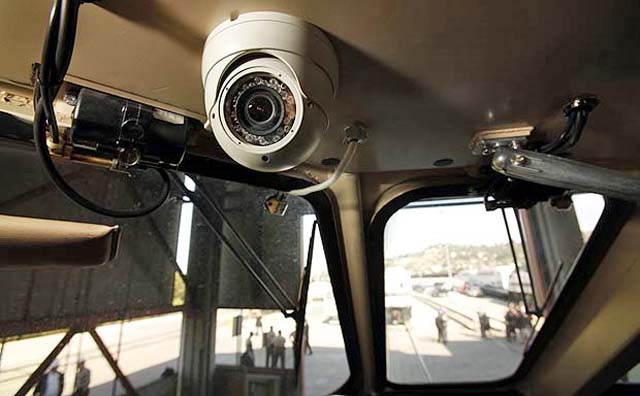
Calgary Alberta - Canadian Pacific (CP) today launched an awareness campaign that highlights the safety benefits of the proactive use of
inward-facing cameras, and continues to urge the Minister of Transport to pass new legislation that would maximize these benefits.
The campaign's website, www.cprailsafe.ca, specifies how CP intends to use the technology to reduce risk, improve safety, and assist in preventing
accidents.
CP is prepared to further invest in and install inward-facing cameras, also known as locomotive video and voice recorders (LVVR), if they can be used to
proactively improve safety.
The use of this technology would immediately enhance a culture of safety and accountability in the rail sector.
"We are proud to be running the safest railway in North America, but we can always do better, and having the ability to use inward-facing cameras allows
us to be even safer," said Keith Creel, CP's President and Chief Executive Officer.
"This is a preventative, proactive, behaviour-changing, tool the industry should have been allowed to use years ago."
The Transportation Safety Board (TSB) has been calling on Transport Canada (TC) to mandate this technology since 2012.
Current regulations allow inward-facing cameras to be used only by the TSB for post-incident investigation.
"Having the ability to use this technology in a proactive manner as opposed to only after the fact would allow us to prevent incidents, instead of
explaining them," said Creel.
"This technology would be another tool in the broader package of rules, regulations, and our safety management system suite, each of which protects the
public, our employees, and the goods we transport for our customers. We recognize the need to use this technology in a way that is respectful of our employees,
and are committed to doing so."
Our industry and regulators have an obligation to take all available measures that enhance the safety and security of the communities surrounding our
railways.
Effective use of inward-facing camera technology would include the ability for it to be used for investigation after an incident, as well as allowing railways
and regulators the opportunity to proactively reduce unsafe behaviours such as tampering, cell phone use, sleeping, and noncompliance with other
safety-critical rules and regulations before incidents occur.
CP uses inward-facing cameras in 49 of its locomotives in the U.S.
The technology is also being used successfully by other transportation companies in the U.S. with studies showing a 40 percent reduction in collisions per
million miles travelled.
For 11 consecutive years, CP has been the safest Class 1 railroad in North America, measured by train-accident frequency.
In 2016, CP celebrated its lowest-ever train accident frequency.
"This government has made rail safety a focus," said Creel.
"We implore the government to do what is right and legislate the proactive use of inward-facing locomotive cameras."
CP has always prioritized the safe transportation of goods through the more than 1,100 communities in which it operates and will invest $1.25 billion on
capital improvements in 2017.
Opponents of taking this important step forward in rail safety are concerned about how railways would use the information.
They say employees have a right to privacy while at work and recordings would be used for disciplinary purposes.
CP is willing to sit down with regulators and stake holders to determine how proactive use is defined given the understanding that the technology must be used
to prevent incidents.
In a recent omnibus survey conducted by Matchbox/MARU with 2,500 Canadians over the age of 18, CP found that almost all Canadians (97 percent) agree
appropriate actions should be taken against employees that behave unsafely, while 89 percent agree that employees working in roles that could directly affect
their own safety and the safety of others should expect to be monitored.
Go to www.cprailsafe.ca? and sign the Safety Pledge and show support for increased safety measures for railway operations across Canada.
Author unknown.
of the Canadian Copyright Modernization Act.



